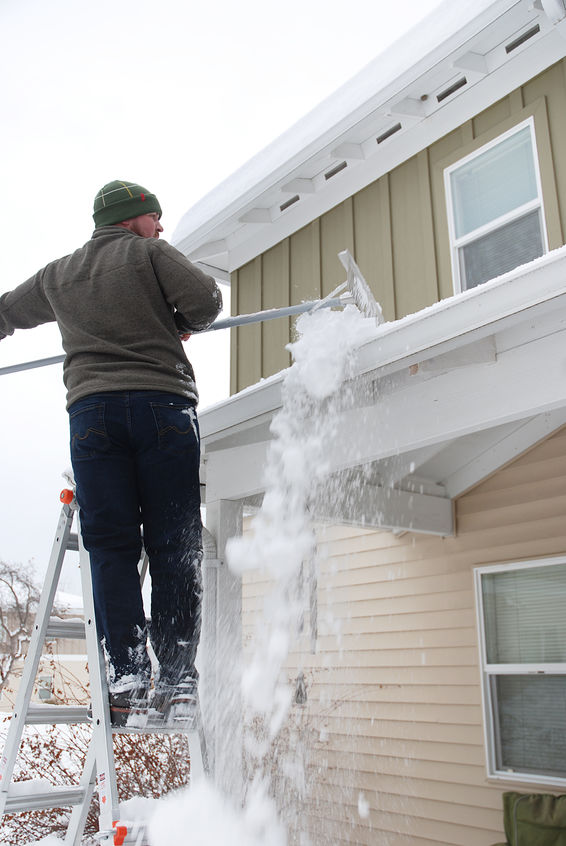
The amount of snow that can accumulate on your roof will depend on whether it is flat or pitched. Flat roofs have a greater risk of roof collapse and structural damage because the snow rests on the same spot as it continues to accumulate. While it is possible to remove snow from your roof by yourself, you need to consider a few things to ensure everything goes according to plan.
Factors to Consider Before Removing Snow from Your Roof
- The Pitch of Your Roof
Flatter roofs are at greater risk compared to highly pitched roofs because they tend to hold a large amount of snow moisture. Since snow is unable to fall from the roof, it melts quickly and can create ice dams that could cause damage on your roof. Removing snow from flat roofs is quite risky since the weight of the snow may shift during the process causing significant damage to other parts of the roof.
- The Age of Your Home
Older homes may have a higher potential for thermal issues and rot since they were designed with varying requirements for snow load at the time of construction. A delicate roof can collapse easily if you use the wrong method of snow removal. Such roofs need special equipment to remove the snow safely without causing structural damage.
- The Roofing Material Used
The type of roof determines how well you can remove snow by yourself and prevent any damage caused by snow removal. Shingled roofs tend to hold the snow longer while metal roofs shed ice and snow better. The roofing material also determines the type of equipment that can be used when removing snow.
- Equipment and Safety
Snow removal methods may vary depending on the type of equipment used. Some of the common methods include roof raking, shoveling and use of heat cables. It is also important to be aware of the potential dangers of removing snow by yourself. There is a risk of falling off a ladder, sliding off the roof, or overexerting yourself.
How to Remove Snow from Your Roof by Yourself
If you decide to take on the task by yourself, it is advisable to start from the edge of your roof and work your way onto the top. It is important to keep in mind that metal tools have the potential to conduct electricity if they encounter a power line. They can also cause significant damage to your roof depending on the roofing material used on the structure. It is recommended to use snow rake or plastic snow removal tools for pitched roofs. Try to keep the snow away from emergency building exits, ventilation openings, fire escapes, and drain downspouts. If you are worried about the safety of your roof or your home, it is advisable to contact a roofing professional as they have the right skills and equipment to remove snow buildup on a roof.
Things to Avoid When Removing Snow from Your Roof
Never use sharp metallic tools to get rid of snow from your roof as they do more harm than good. Removing heavy layers of snow can be risky if the snow hardens to ice. If you will be handling the task by yourself, do not use a standard ladder as it may develop ice on the rungs. It is not advisable to melt snow using electronic devices or open-flam devices, especially if you have a flat roof. It creates more ice that adds more weight and interferes with the structural capabilities of your roof. If you are not confident about your ability to handle large amounts of snow, you can always hire a roofing professional to check the condition of your roof and advise on the best methods for snow removal.
Although you can remove snow from your roof by yourself, the procedure is always risky and could cause more harm than good if you lack the right skills and equipment for the task. Too much snow load can push down on your home’s structure causing cracks in the walls. If you cannot remove snow on your own, it is advisable to seek assistance from a professional roofer or engineer as they have the right skillset and experience in dealing with snow load on a roof.
